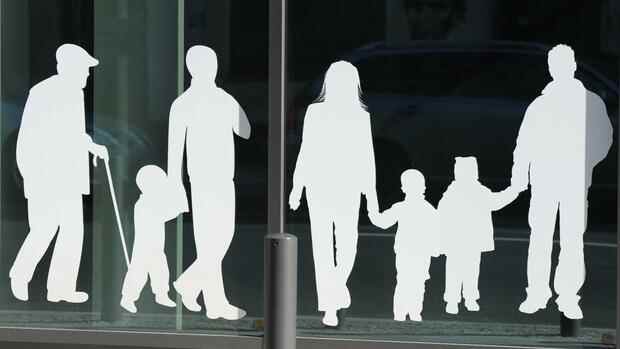A traffic light coalition must not play off generations against each other in social policy.
(Photo: dpa)
Admittedly, little concrete information has leaked out from the traffic light explorations. But the SPD, Greens and FDP have already made it clear what the most important challenges they see for the future: digitization, decarbonization and demography.
Demographic change is the most easily predictable of the three megatrends. Countless studies and statistics have impressively described the fact that the birth rate is falling, life expectancy is increasing and the baby boomers entering retirement will pose enormous financial problems for the social security funds from the middle of this decade.
When historians one day take stock of the Merkel era, they may ask why the grand coalition has done next to nothing since 2013 to defuse the time bomb in the social security systems.
In terms of pension policy, the Union and the SPD have countered the sensible approach of distributing the burdens of aging more fairly across the generations by raising the retirement age to 67 years.
Top jobs of the day
Find the best jobs now and
be notified by email.
Instead of making old-age provision demographic-proof, Schwarz-Rot pursued a clientele policy at the expense of the boys – through costly service expansions such as the mother’s pension or the fixing of the pension level.
The same applies to healthcare or nursing. Although the aging society alone leads to higher health costs, Minister Spahn in particular has saddled on top of the spending as if there were no tomorrow.
The fact that the Union and the SPD passed a law in the last few meters of the electoral term that drives up the personnel costs in care and at the same time caps the self-contributions of those in need of care shows how forgetting the future of the grand coalition ruled.
The SPD, Greens and FDP must now pull the lever
The result is a creeping system change in the social security system. Pay-as-you-go financing, which helps ensure that a welfare state only spends as much as it can afford, is increasingly being replaced by cross-subsidization from the tax fund. The subsidy for the pension fund now amounts to more than 100 billion euros, billions of euros are reserved for the health insurance funds in the federal budget, and long-term care insurance is now for the first time on the tax drip.
The SPD, the Greens and the FDP now have the chance to pull the lever. A traffic light alliance will only become the much-invoked future coalition if it succeeds in defusing the demographic explosive device. Because the question of intergenerational equity, which the Federal Constitutional Court answered clearly in favor of young people in terms of climate protection, also arises in social security.
It takes courage to make this future-proof without unilaterally distributing the burden. But the next government must no longer shy away from making politics against the largest group of voters: the so-called “best agers” (55 plus) and the elderly. The chances were probably not as good as they are now.
Because the Greens and FDP achieved a considerable proportion of the votes, especially with first-time and young voters. You should think about it when SPD chancellor candidate Olaf Scholz continues to pretend that the demographic challenge does not exist in the “see nothing, hear nothing, say nothing” manner.
In coalition negotiations, the FDP will, of its own accord, seek to prevent the expansion of services financed on credit – after all, it has promised its voters that there will be no tax increases with it. But the SPD and the Greens should also think carefully about what the narrower room for maneuver in the federal budget should be used for.
Every euro for the pension, health or long-term care insurance is missing for investments in digitization or decarbonization. In any case, there must not be a simple continuation of this, for example by extending the guaranteed pension level beyond 2025.
Precisely because a traffic light alliance has to overcome ideological rifts in order to come together at all, solutions could be found in coping with demographic change that would otherwise have failed due to the hardliners of the respective party. This applies, for example, to the development of greater funding in pension insurance or more freedom of choice in health services.
And instead of – as in the grand coalition – simply fulfilling each partner’s spending wishes, a traffic light alliance could present a joint cross-off list for a change. The only thing that is certain is that the SPD, Greens and FDP must act. Otherwise the social system will fly around their ears – and the future alliance has no future beyond 2025.
More: The Germany Plan: 21 tasks that the next government urgently needs to tackle
